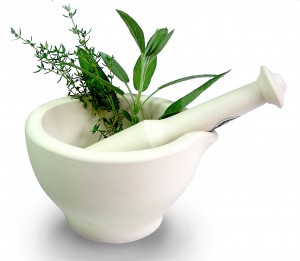 Isolating DNA from plant tissues is difficult for many reasons. Unlike animal cells, plant cells have rigid cell walls, often made of tough fibrous material, and contain proteins and enzymes and other compounds such as polysaccharides and polyphenols that play a role in different cellular processes. These compounds can interfere with DNA isolation as well as downstream applications such as PCR. For these reasons, DNA isolation methods that are used successfully for other sample types may not work well to isolate DNA from plant material.
Isolating DNA from plant tissues is difficult for many reasons. Unlike animal cells, plant cells have rigid cell walls, often made of tough fibrous material, and contain proteins and enzymes and other compounds such as polysaccharides and polyphenols that play a role in different cellular processes. These compounds can interfere with DNA isolation as well as downstream applications such as PCR. For these reasons, DNA isolation methods that are used successfully for other sample types may not work well to isolate DNA from plant material.
CTAB (hexadecyltrimethylammonium bromide) methods have been the gold-standard for isolating DNA from plant material. However, home-brew CTAB methods are time-consuming, use toxic ingredients, require specialized training and access to a fume hood, and can result in inconsistencies in purification that lead to failed isolation. Commercially available, silica-based columns, while widely popular for DNA isolation from other sample types, do not perform consistently for all plant species and tissues. The ideal plant DNA isolation method would consistently isolate high yields of DNA from a broad range of plant types in a safe and efficient manner (1).
Paramagnetic Cellulose Particles vs. Silica columns and CTAB
An article published last year by researchers at the University of Wisconsin–Madison (1) compared both silica columns (DNeasy, Qiagen) and a CTAB method (adapted from Doyle and Doyle, 1987; 2) to a newly developed automated method that uses paramagnetic cellulose particles to isolate DNA from plant material (Maxwell® 16 LEV Plant DNA Kit; Cat.# AS1420). The paramagnetic cellulose particles in the kit have a high DNA-binding capacity and use a simple protocol and the Maxwell® 16 instrument to automate DNA isolation.
Paramagnetic Cellulose Particles Isolate Higher Yields of DNA—Especially from Lower Yielding Samples
The researchers collected samples from 25 different flowering plants that grow regional forests in Wisconsin. They isolated DNA from all the samples using the silica column, CTAB method and Maxwell® 16 Instrument with paramagnetic cellulose particles. To determine DNA yield, they used a picogreen dye, and then further quantitated a subset of samples using quantitative PCR (GoTaq® qPCR Assay).
DNA yield for the paramagnetic cellulose particles averaged 38.2ng/µl (across all the species sampled). This was more than twice the yield for the silica or CTAB methods (16.8ng/µl and 17.8ng/µl, respectively). Further yield comparison by regression analysis showed that the cellulose particles gave a constant advantage over the silica particles in terms of absolute yield, and for low-yield species, the cellulose particles offered a significant advantage over the silica particles. Slope regression of the cellulose particles yields on the CTAB yields did not show the same consistent advantage of the cellulose particles. However, for species that gave a low DNA yield with CTAB, the cellulose particles showed a dramatic relative advantage.
Paramagnetic Cellulose Particles Isolate More Amplifiable DNA with More Consistent Purity
Quantitative PCR showed that the cellulose particles isolated more amplifiable DNA from all 12 species tested. Some samples isolated by the CTAB method from two of the species failed to amplify even after 40 rounds, suggesting that certain plant types might require post-isolation treatment when isolated with this method.
The overall purity of the isolated DNA was measured with A260:A280 and A260:A230 ratios using a NanoDrop® 2000 Instrument. All three methods isolated DNA of similar quality; however, the DNA samples isolated with the cellulose particles had the most consistent results between the species for both purity ratios.
Paramagnetic Cellulose Particles Offer Greater Yields and Consistent Purity When Isolating DNA from Plants
DNA isolation is the fundamental first step for many molecular biology applications. Historically, it has proven difficult to isolate usable DNA from plant material for many reasons including the fibrous nature of some tissue, the rigidity of the cell walls and the presence of proteins and enzymes and compounds such as polysaccharides and polyphenols. To overcome these challenges, a DNA isolation method must consistently isolate high yields of DNA from a broad range of plant types and do so in a safe and efficient manner. In the paper reviewed here, the authors found that DNA isolation using the paramagnetic cellulose particles in the Maxwell® 16 LEV Plant DNA Kit yielded more DNA with more consistent purity that the silica-based columns and CTAB method they evaluated. These results, coupled with the finding that DNA isolated with the Maxwell® 16 LEV Plant DNA Kit was more reliably amplified in a qPCR assay, suggest that the cellulose paramagnetic particles in the Maxwell® Kit might at last offer an efficient, reliable method for DNA isolation from plants.
Want to know more about how the Maxwell® RSC can give you the freedom to focus on the work that interests you the most? To learn more, click here.
References
- Moeller, J.R. et al. (2014) Paramagnetic cellulose DNA isolation improves DNA yield and quality among diverse plant taxa. Appl. Plant. Sci. 2(10), published online Oct 2014; accessed March 10, 2015. ( PMC4189495)
- Doyle, J.J. and Doyle, J.L. (1987) A rapid DNA isolation procedure for small quantities of fresh leaf tissue. Phytochemical Bulletin 19, 11–5.
